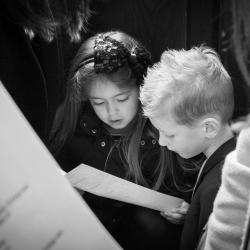H.H. Lambertus en Brigida
Middelaar, NL
The St. Lambertus Church, because of the bronze bell from 1533 and the inventory, including 18th-century statues such as St. Brigida, St. Willibrordus, St. Lambertus and St. Sebastianus. Reconstruction church. New construction after heavy war damage. Tower 1949.This church is listed as a National Monument of the Netherlands.






